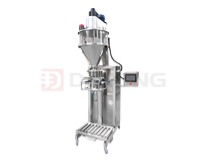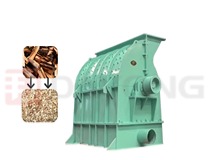What factors affect the working efficiency of the vibrating screen
1. The influence of the nature of the raw materials
1. Moisture content
The moisture content of the material is also called humidity or moisture. The external moisture attached to the surface of the material particles has a great impact on the screening of the material, while the moisture in the cracks of the material and the moisture combined with the material have no effect on the screening process.
2. Mud content
If the material contains a mixture that is easy to agglomerate (such as clay, etc.), it may be difficult to sieve even when the moisture content is small. Because the clay material will stick into agglomerates during the sieving, so that the fine mud is mixed into the sieve product; in addition, the clay is also easy to block the sieve holes.
3. Granularity characteristics
The particle size characteristics that affect the screening process mainly refer to the content of various particle sizes in the raw materials that have specific significance for the screening process.
4. Density characteristics
When all the particles in the material have the same density, it generally has little effect on the screening, but when there is a difference in density between the coarse and fine particles in the material, the situation is quite different. If the coarse-grain density is small and the fine-grain density is high, it is easy to sieve. On the contrary, if the density of coarse grains is high and the density of fine grains is small, it will be relatively difficult to sieve.
2. Effect of sieve performance
1. The movement form of the screen surface
The movement form of the sieve surface is related to the looseness of the material layer on the sieve and the speed, direction and frequency of the fine material that needs to be sieved relative to the sieve surface, so it has an impact on the process of stratification and sieving. For example, the movement of materials on a fixed sieve depends entirely on the material sliding and flowing under the action of its normal gravity, and the screening effect is poor; The ground is sufficiently loose, and the particles collide violently against the sieve surface continuously, so the effect in the sieve is better.
2. Structural parameters of the screen surface
(1) Screen surface width and length:
In general, the width of the screen surface determines the processing capacity of the sieve. The wider the screen surface, the greater the processing capacity; the length of the screen surface determines the screening efficiency of the sieve. The longer the screen surface, the higher the efficiency.
(2) Screen surface inclination:
The angle a between the screen surface and the horizontal plane is the inclination angle of the screen surface. The size of the inclination angle is closely related to the processing capacity and screening efficiency of the screening equipment. If A is large, the material group moves forward quickly on the screen surface, and the processing capacity of the screen surface is large, but the time for materials to undergo screening on the screen surface is short, and the screening efficiency is low.
(3) The size, shape and opening ratio of the sieve hole
The larger the sieve hole, the higher the processing capacity per unit sieve area and the higher the screening efficiency. The size of the sieve hole mainly depends on the purpose and requirements of the sieve. For conventional sieving with larger particle size, the size of the sieve hole is generally equal to the sieve particle size; The particle size is slightly larger; for approximate sieving, the sieve opening is much larger than the sieving particle size.





 (Live chat)
(Live chat)


_213x160.jpg)


 +86-15136770681
+86-15136770681 sale@vibratingscreen.cc
sale@vibratingscreen.cc +86-373-3669006
+86-373-3669006 From West Room 5, 1st Floor, Building 18, Huilong Yangguang Mingyuan, New District, Xinxiang, Henan, China (Mainland).
From West Room 5, 1st Floor, Building 18, Huilong Yangguang Mingyuan, New District, Xinxiang, Henan, China (Mainland). Your Position:
Your Position:


